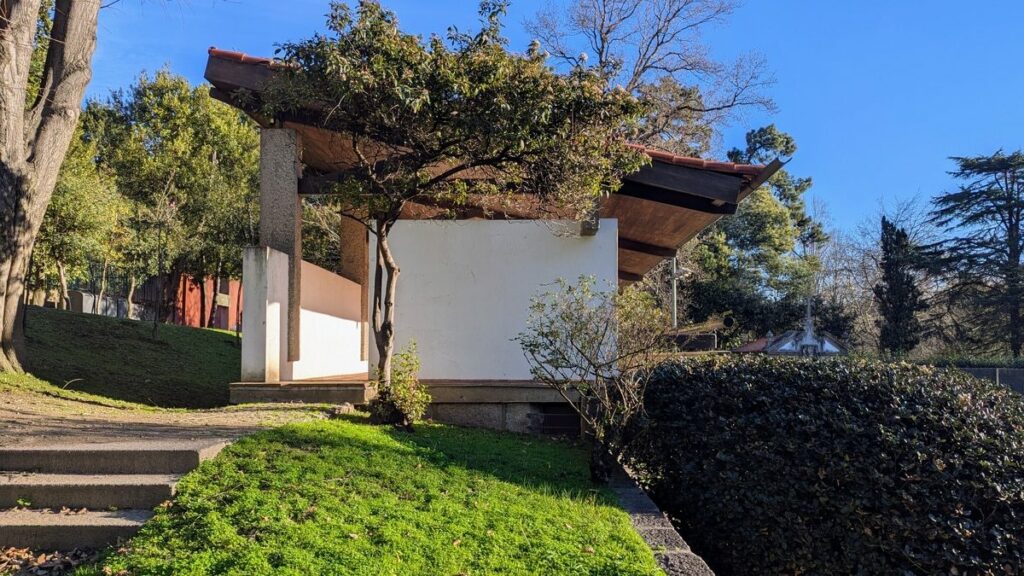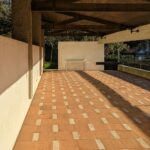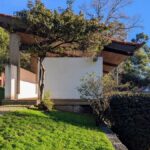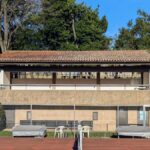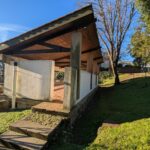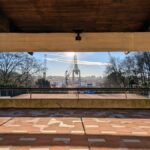Hidden within the leafy expanse of Quinta da Conceição park in Matosinhos, the Tennis Pavilion by Fernando Távora stands as a quiet manifesto of modern Portuguese architecture. Designed in 1956, this modest yet refined structure captures the early ideals of the Porto School: a modernism rooted in place, attentive to landscape, tradition, and human scale.
Távora, a pivotal figure in Portuguese architecture, was instrumental in bridging the international rationalist movement with local vernacular wisdom. This pavilion—one of his most celebrated works—is a clear expression of that synthesis. Nestled among the remnants of a convent and centuries-old trees, it demonstrates a careful dialogue between built form and natural context.
Built in exposed concrete and timber, the pavilion rests lightly on slender pilotis, its horizontal lines echoing the ground plane. Broad glass openings invite the surrounding park into the interior, while a generous cantilevered roof offers shade and shelter, extending the architecture outward. Inside, Távora arranges the programme—changing rooms, storage, and a social space—with pragmatic clarity and quiet elegance.
More than a sports facility, the Tennis Pavilion is an architectural lesson in restraint, proportion, and contextual sensitivity. It marks a turning point in postwar Portuguese architecture and foreshadows the path taken by Távora’s students, including Álvaro Siza Vieira. Today, it remains a touchstone for those who seek an architecture that is both modern and rooted.
